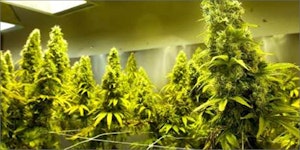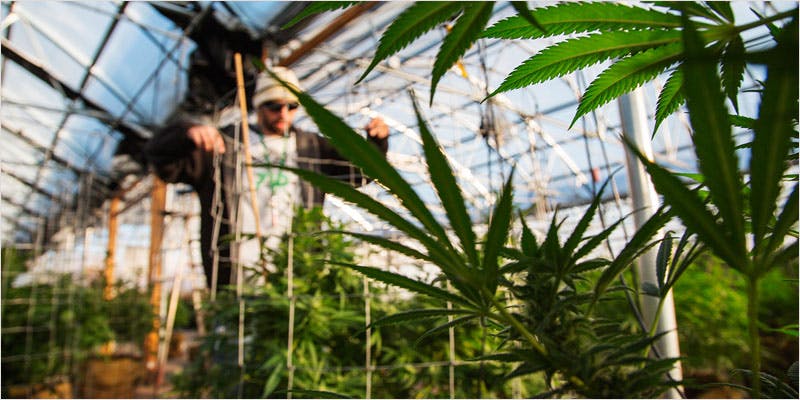
Best Of Both Worlds: All You Need To Know About Greenhouse Grows
Outdoor grows are cheap, indoor grows are controlled. Luckily, there’s a way to get the best of both worlds: Greenhouse grows.
When it comes to growing cannabis, there are generally two options: indoors or outdoors. Both have their advantages and disadvantages. But with the increasing legalization of home growing, as well as commercial cultivation, a new option is gaining popularity: Greenhouse grows.
Overcoming shortfalls: Why greenhouse grows are better
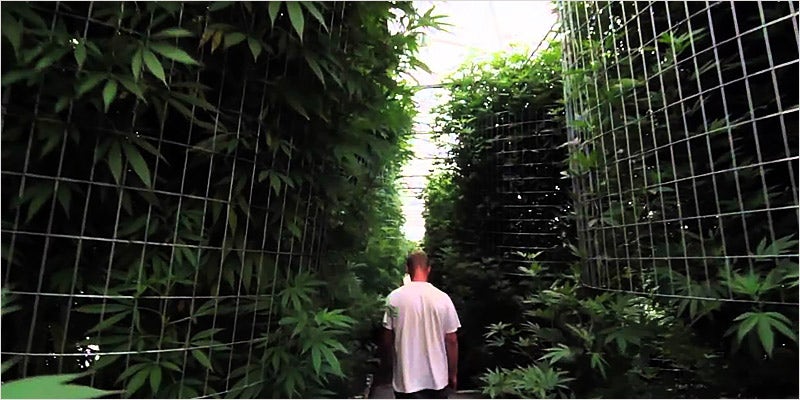
Using a greenhouse gives you the best of both worlds. The control of an indoor environment with the flexibility of an outdoor grow. Here is how it stacks up against the downsides of its counterparts.
Greenhouse grows allow for excellent control of the environment but carry expensive drawbacks. Lighting has to be provided, space is cramped, and concealment can be a problem. Everything normally provided by nature has to come out of your pocket.
In a greenhouse, however, you cut your biggest cost of electricity by using the sun for light. Your grow has plenty of room for cultivation, without damage or modification to your home.
Outdoor grows are far less expensive, but are also more exposed, both to the elements and prying eyes. Having a greenhouse means that your plants can be shielded from inclement weather, as well as kept hidden and inaccessible to others. You can monitor and control temperature, humidity, light, and pests far better than in the open.
The key components of greenhouse grows will allow you to have a safe and spectacular grow are systems, security, strategy, and smell reduction.
Growing with a system
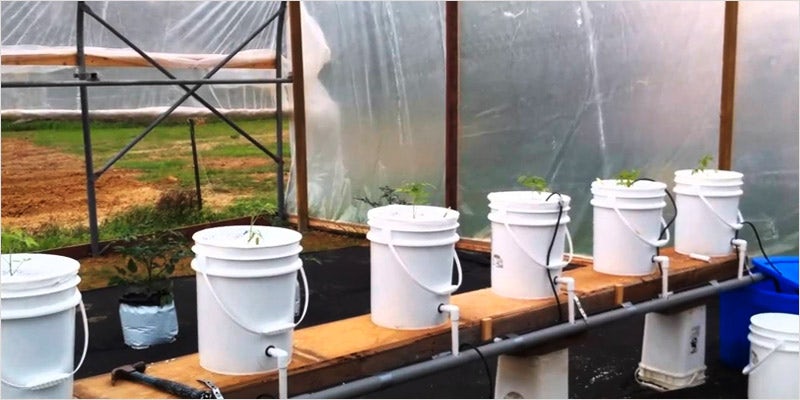
With greenhouse grows, you can automate several of your processes, allowing your cannabis to thrive for longer periods without you having to do any work. You can use humidity and temperature monitors and regulation equipment to both extend your growing season and tweak the environment to be perfect for your plants.
Automated watering systems or even hydroponics setups are easy to setup in this environment, and if they are in your budget, can make tending your garden far less time-consuming.
Security
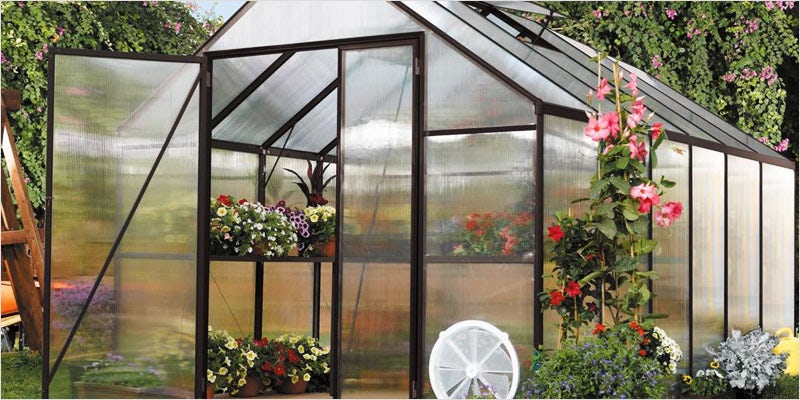
Greenhouses offer more in the way of security than you might expect. Primarily, they give a perfect explanation for your activities and supplies; Gardening. They also conceal your crop, whether by hiding your herb amongst other plants, or simply through shielding them with semi-transparent glass or plastic.
If your greenhouse has a proper frame, it can also have a door with a lock, deterring unwanted visitors. In addition, fences or barriers can be justified to prevent access to growing chemicals or expensive tools, while really doubling as a second barrier against snooping guests.
Having an area outside the greenhouse where other plants are transferred in ideal weather can give it more implied space, as well as legitimacy. Even the simple act of camouflaging cannabis with a wire frame among wire framed tomatoes and other plants can trick the eye, even in a clear greenhouse.
Strategy
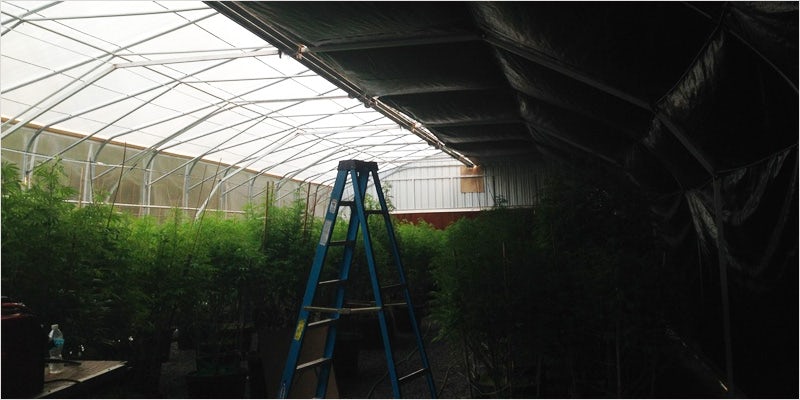
You can extend the growing season or even have multiple grows in a year by manipulating the light and temperature of your greenhouse. Greenhouse heaters can be purchased at your local garden center to stretch your season or protect plants on cold nights.
You can control when your plants flower with blackout tarps to block light. These same tarps can also allow you to extend lighting hours inside the grow without leaking suspicious light outside.
Growing earlier in the season lets you harvest from bigger plants, but big plants can pose the same problems as with an indoor grow. Using tie-down techniques can let you maximize your space and keep even bigger plants in check.
For plants in different stages of veg and flower, you can also use mini tents over individual plants to force flowering while younger plants keep getting light. Diffused glass or plastic walls will mask this curious practice from onlookers.
Smell reduction
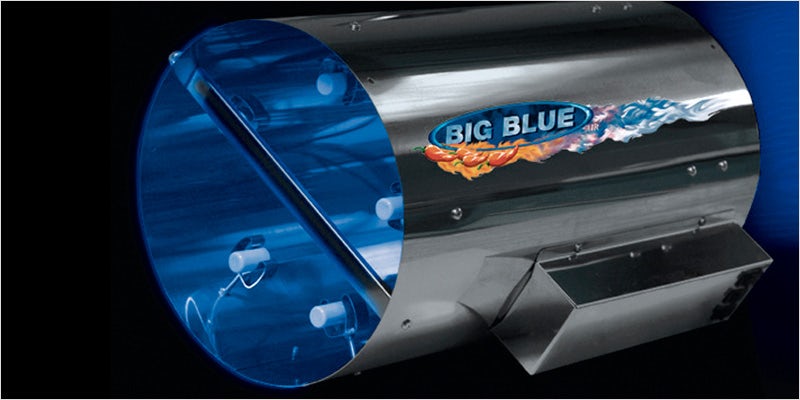
In order to keep your grow from getting unwanted attention, even if it is invisible, you have to keep the smell down. Inline carbon scrubbers are not as effective in high-humidity environments like greenhouses, but you still have options. With just a few cannabis plants, you can
With just a few cannabis plants, you can mix in other plants with strong odors to mask the smell, such as fragrant flowers, aromatic herbs, pungent spices, and vigorous vegetables.
The potent smell of compost and fertilizers can also cover the smell, but for large cannabis plants or larger numbers, an inline ozone generator can extract the smell through the normal ventilation of the greenhouse without attracting attention as well. They cost more, but if you plan on larger harvests, they are well worth the investment.
Options for greenhouse grows
When deciding on a greenhouse setup, there are several options, from the small backyard basics to the commercial grade rural farm extravaganzas. Cheaper is not better, as weak frames can be blown over in storms, and poor setups can let plants fry in the summer heat.
Polytunnels and free boxes
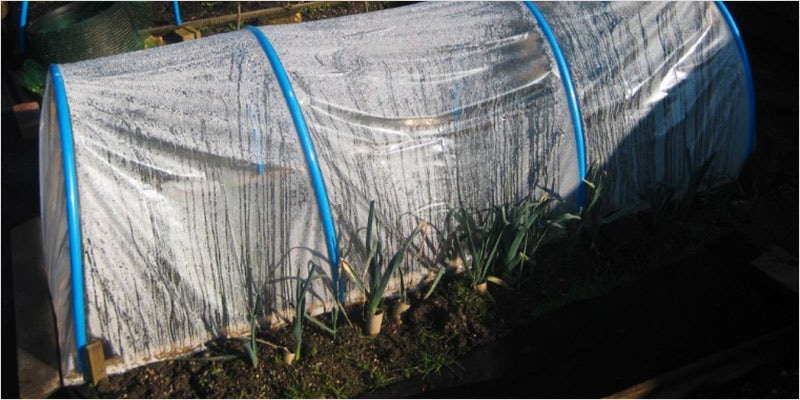
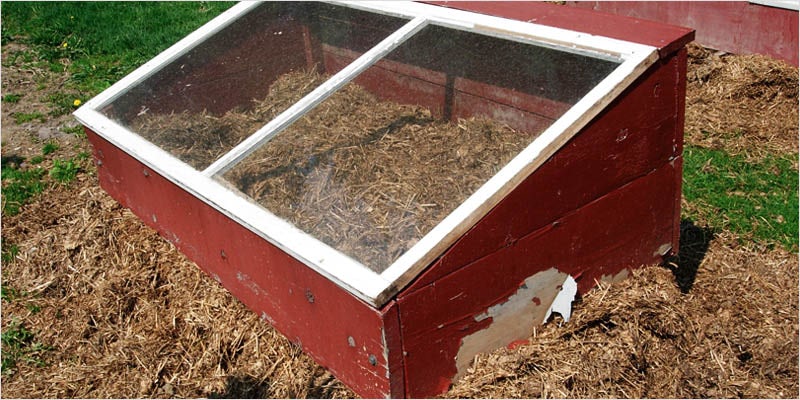
The smallest (and least expensive) form of greenhouse setup is polytunnel. A curved frame covered in plastic sheeting is used to cover rows in a garden. These can be made in various sizes, to accommodate plants in different stages. For cannabis, as it grows in size, it will have to be tied down to limit height, and covered by larger tunnels as it grows. This is only acceptable for fair weather climates and grows already obscured from view, because to tend the plants you will have to remove the cover, exposing plants to the open.
For cannabis, as it grows in size, it will have to be tied down to limit height, and covered by larger tunnels as it grows. This is only acceptable for fair weather climates and grows already obscured from view, because to tend the plants you will have to remove the cover, exposing plants to the open.
Free boxes are simply frames built over small garden boxes that allow for a greenhouse environment for the plants but not for you to fit inside. The lid can latch shut for privacy, but must be opened to care for plants. This is also good for small grows, but both of these setups are limited in airflow and temperature control.
Lean-to setups
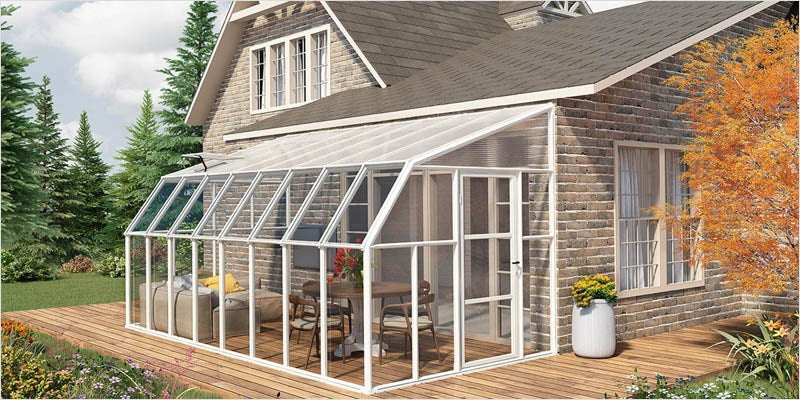
These are the most common urban setups, as they are attached to a house or other building. They get the benefits of direct lines of power and indirect heat from the structure they are adjacent to, as well as being partially blocked from view. The downside is that they must be on a side of the home that faces the sun throughout the day, so are not an option for everyone, depending on the layout of the home.
The downside is that they must be on a side of the home that faces the sun throughout the day, so are not an option for everyone, depending on the layout of the home.
Hotbeds and cold frames
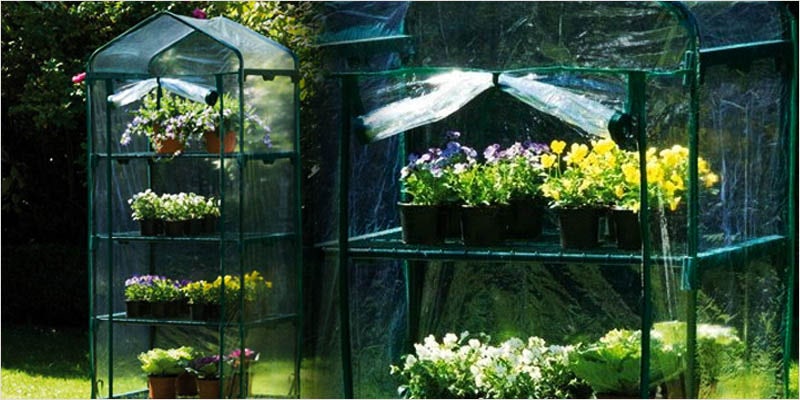
A cold frame is a basic freestanding greenhouse, generally a temporary structure in lieu of a more expensive greenhouse. Made of a simple frame of plastic or wood, they are covered by basic plastic sheeting or thin plate glass. Ideal for warm climates, they are only heated by the sun and are somewhat flimsy in high winds or storms.
Adding a heating system to a cold frame makes it a hotbed. In either case, it can be as small as a free box, or the size of a full freestanding greenhouse.
Freestanding setups
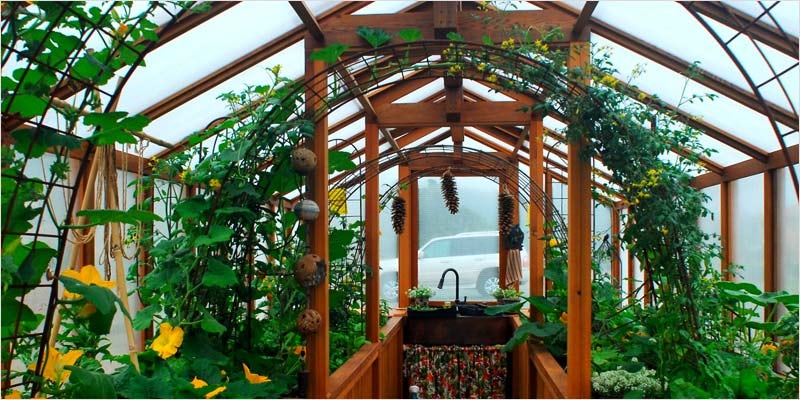
This is the best personal setup you can get. Usually designed with a pointed roof, sturdy frame walls, a framed door, and room to work inside, a freestanding greenhouse is ideal for most climates. You can place them wherever light and resources are best. Sturdy frames give support and protection for work benches, overhead lighting, utilities, fans, and other systems.
With a more solid frame, there is the issue of more shaded spots. This issue can be mitigated with diffused glass walls, allowing light to spread evenly so plants don’t stretch or fight for light.
Large polytube setups
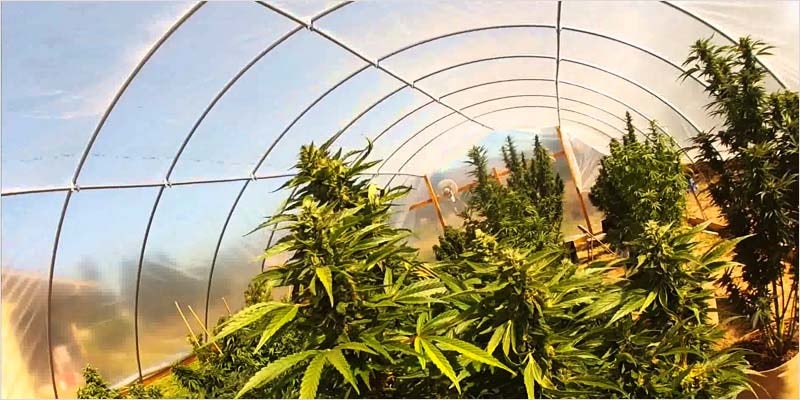
Large polytube setups are amazing, but only ideal for large-scale commercial grows or rural farm environments. They are generally domed polytunnel designs on a grand scale, either as long individual greenhouses or combined with the walls rolled up so they abutt, making one large grow area.
Greenhouse growing basics
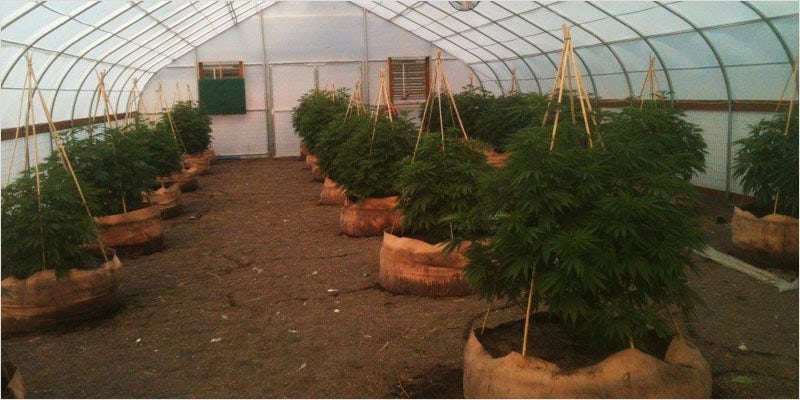
While the basics of growing cannabis are universal, from light to nutrients, the most important technical aspects of greenhouse grows are temperature and airflow. Greenhouse grows are exposed to the elements and outdoor conditions, but sheltered from the breeze, making for unique challenges in these areas.
In controlling temperature, the first aspect is your light. Choosing clear paneling means more light reaches your plants, but with more light comes more heat, as well as a lack of privacy. There are diffused and semi-diffused panel options but fully diffused panels might block too much light depending on the region. Semi-diffused panels are a good balance. Diffused paneling also prevents hot spots or shady spots in the greenhouse.
You can supplement the heat provided by sunlight with heating units, but to keep the temperature down, you want to have excellent airflow.
Airflow
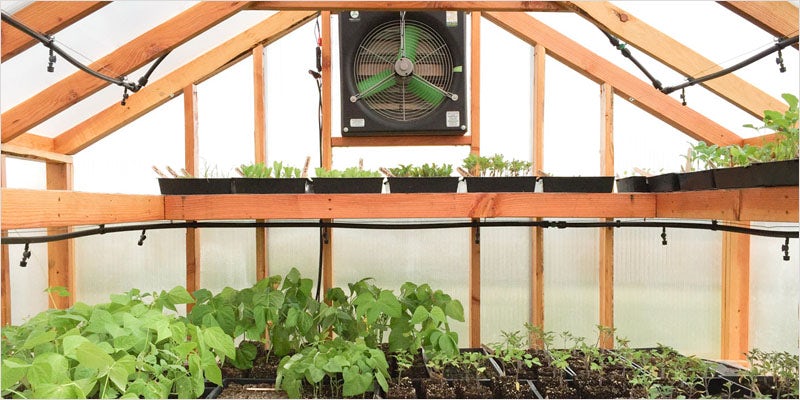
The second aspect of temperature control is the balance of heat with airflow. You want the environment to be warm in cool weather and cool in the hot summer. Like an indoor grow, you want the air intake low, and the exhaust at the top of the greenhouse.
Make sure to have inside fans capable of moving adequate air for a steady breeze, and that the intake and exhaust openings are large enough to move air through the greenhouse relatively quickly.
You will need more airflow with hotter days. This may mean more vents. Like an indoor grow, you want more power at your exhaust than your intake, to suck the heat out. You can choose between manual vents for extra airflow, or automatic vents, which have a wax inside that expands at certain temperatures, opening and closing the vents automatically.
Proper airflow will also help keep humidity in check. Greenhouses have a higher humidity than other grows, and this can be a problem, especially during flowering, as you don’t want mold to form on buds. Good direct light early in the day and strong airflow will help to keep humidity within acceptable levels.
Do you have the option for greenhouse grows? Are you a greenhouse grower with a great personal setup? Share your success with us on social media or in the comments below.
Herb Recommended Products:
READ MORE
